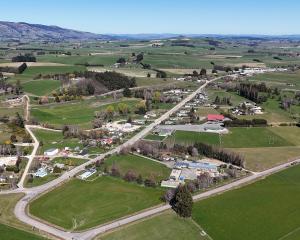
There is no doubt that the fatal stabbing of 16-year-old schoolboy Enere Taana-McLaren at the Dunedin bus hub last year was a tragedy — for all concerned.
A report to be considered by the Otago Regional Council today offers a glimmer of hope that, indeed, something good may come from this sad affair.
The council commissioned an independent report, on behalf of the Dunedin Central City Safety Advisory Group, into cities both in New Zealand and abroad that have dealt with disorder issues similar to those which have plagued the bus hub.
While it makes no recommendations and councillors need not frame any resolutions based upon it, it sets out a sensible framework for future action.
Although Enere’s death serves to make such analysis redundant, the report confirms — both through anecdotal accounts of bus hub users and examination of reported crime data — that there is indeed a problem in the area, and that many people feel unsafe in the vicinity.
From that starting point the researchers cast their nets far and wide to see how places like Rotorua, Auckland, Wellington, Sydney, Adelaide and Bath have managed safety at their transport hubs and gathering spots.
A key finding is that safety measures must not only be done, but that they be clearly seen to have been done. People feel safer if they see obvious moves to protect them in plain sight, be that prominent signage or regular well-trained patrols.
Dunedin police have established a beat team to increase foot patrols in the city centre. This is encouraging, but cynicism — whether justifiable or not — remains about other security staff at the bus hub. Restoring faith that people will be around to help if needs be is paramount.
The example of Tauranga, which has involved its young people on ways to enhance perceptions of safety in city spaces, will be instructive.

One universal theme in the other city’s safety plans is that this is no one department or agency’s problem and that many people will need to work together to effect change.
Establishment of the safety advisory group should therefore be seen as a wise move; the ball is now in its court as bus hub users — many of whom are young and/or vulnerable — wait for effective action.
The one thing Dunedin cannot have happen is what some of the city’s school principals already fear is occurring — that the problems of the bus hub are simply being moved elsewhere in the city.
As reported by the Otago Daily Times yesterday, Otago Girls’ High School principal Bridget Davidson’s submission to the ORC’s Draft Regional Public Transport Plan said bus stops elsewhere in the city were now becoming overcrowded and dangerous.
Trinity Catholic College principal Kate Nicholson agreed, saying that pupils had told her they were still using the bus service but from other city stops rather than the bus hub.
While it is pleasing that reports of incidents at the bus hub are down, that may simply be as a result of the phenomenon that the principals and pupils have recognised — of patrons, and therefore possible trouble, moving on to fresh fields.
The report considers this too, noting that when this has occurred in other cities safety teams have been quickly sent to the new trouble spot to provide reassurance. That does run the risk of wardens playing whack-a-mole with trouble-makers, but it is far better to be pro-active than reactive.
As the report notes, transport hubs have become hotspots for anti-social behaviour in most areas. As a natural meeting point, they have become high-risk areas for many young people who need to wait for connecting buses.
Dunedin is not alone in confronting this, but the city now has many examples from elsewhere of how these issues can be confronted.
Lessons are there to be learned so that, indeed, some good may spring from the ghastly events of last year.










